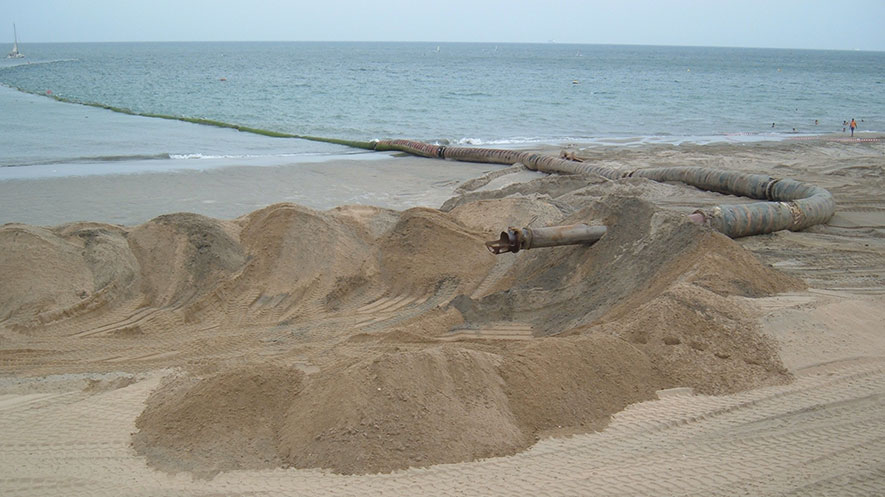Is your coastal community concerned about sea level rise (SLR)? If so, good – and a recently published article may help you make plans to respond to rising seas.
Writing in the most recent issue of “Shore & Beach,” James Houston, Ph.D., looks at Florida’s east coast as a laboratory for adapting to SLR, making a case for beach nourishment as an effective SLR response while developing a formula beach managers can incorporate in their coastal calculations.
For Florida’s coasts, beach nourishment – mechanically returning beach-quality sand to shorelines to replace that lost to erosion and inlets – has been an effective counter to keeping the state’s coasts healthy. Of course, this in turn keeps the state’s economy healthy, since beaches bring tourists and tourists bring money.
But this low-lying state also has plenty to ponder in the face of SLR predictions, as do most coastal areas throughout the country. So Houston – Director Emeritus of the U.S. Army Corps of Engineers' Engineer Research and Development Center – looked to the Atlantic coast to see how SLR and beach nourishment could interact.
He used as a basis for his analysis all phenomena affecting shoreline change including what is dubbed the “Bruun rule,” a tested formula that predicts how shorelines (both above and below the water) respond to changes in sea levels by seeking to maintain water depth equilibrium. The rule has been used to show that a 1 cm (0.4 inch) rise in sea levels results in 0.5 to 1.0 meters (1.7 to 3.3 feet) of horizontal erosion of the upland beach, as sand moves to the nearshore (and underwater) portion of the beach to maintain equilibrium – assuming no other factors come into play.
However, if one restores eroded sand back to the dry shoreline, you reset the erosion point of equilibrium seaward – meaning wider sandy beaches and the benefits they bring. Since there are a number of factors moving sand along a shoreline – waves that pull sand away and bring it back as well as moving it laterally, plus the impact inlets have in sand movement – calculating the restoration needs for any coastline (via renourishment) needs to include all these other influences in the equation.
Houston has done so for the Florida east coast, factoring in the overall nourishment from 1971 (the start of widespread beach nourishment in Florida) to 2007 with the other sand-movement variables. He then offers a series of SLR scenarios as developed by the Intergovernmental Panel on Climate Change, to offer projections on the amount of shoreline change which could be expected for each SLR projection.
His findings? If the East Coast shorelines can continue to be nourished at the 1971-2007 rates into the future, those bountiful beaches can hold well to all but the worst SLR projections through the end of this century. He tests this theory on a county and city coastal level, using historical shoreline changes figures as a constant and 1971-2007 nourishment rates as his basis for SLR response projections – and concludes this projection can work a multiple levels.
Houston is quick to add that SLR response is not a beachfront issue alone. As saltwater levels rise, coastal areas will need to address back-bay flooding, salinity intrusion in freshwater aquifers and other mitigation efforts as impacts arise.
But, at least along the sandy shores, there is a way to keep rising seas at bay – and a way to plan and predict the effort needed. For coastal managers, that could be a valuable tool.
“Shore & Beach” is a peer-reviewed technical journal published quarterly since 1933 by the American Shore & Beach Preservation Association. You can find out more about the journal and the association online.



